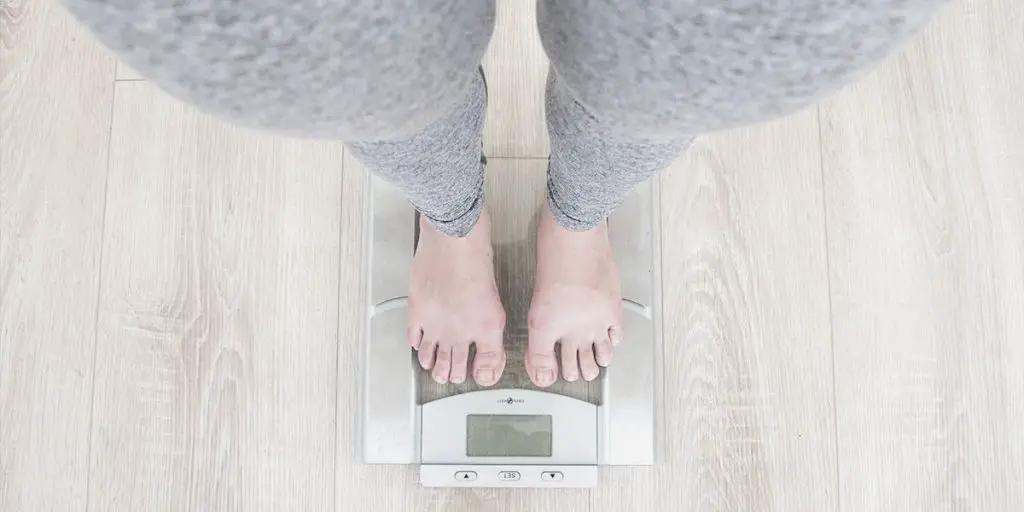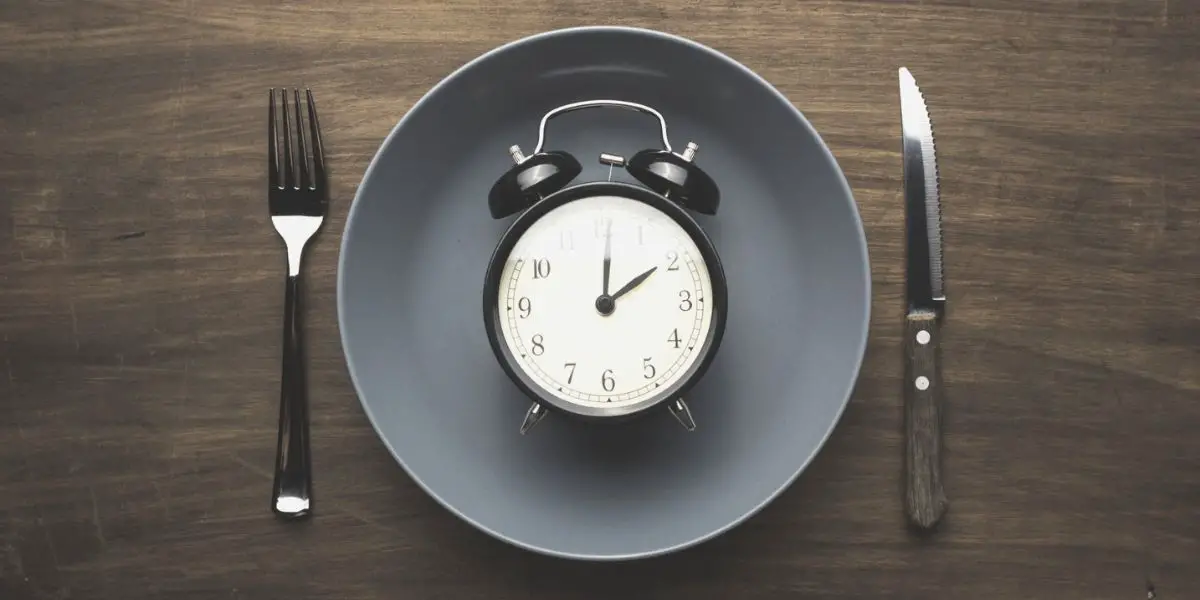Beginner’s Guide to Intermittent Fasting
How and Why to Intermittent Fast
Weight loss has become a fascinating field with a plethora of scientific research. Many fad diets, pills, and programs have come and gone with people experiencing mixed results. The truth to weight loss remains central to one common theme “Calories in versus Calories out.”
Fasting takes advantage of the time of calories out. When the body is in fasting mode, there is no calorie intake, and all calories must be burned from body storages. You can think of the benefits of intermittent fasting as keeping the momentum of a fat burning state.
The Philosophy Behind Intermittent Fasting
Intermittent fasting is a tool applied to the concept of “calories in versus calories out.” You cannot lose weight while sitting in a caloric surplus. Caloric surplus means that the body has extra energy that it can use to build nonessential body mass or store as fat. In a caloric deficit, the bodies energy needs are not optimally being met for the essential body mass. Essential body mass includes vital organs like the heart, lung, brain, smooth muscle, and skeletal muscle needed to continue normal habitual daily activities.
Bodybuilders have essential body mass because they have more skeletal muscle to move the weight they habitually move. They eat much more calories than a typical adult. However, they remain lean while eating more calories. How is this possible? Because caloric surplus isn’t relative to other people. Caloric balance is specific to your body mechanics. Adults who exercise regularly and lift weight have more essential body mass and require more calories to be balanced.
How to Time Meals to Fit Lifestyle
Intermittently fasting is designed to move the time that you eat to a smaller window in a 24-hour day. Most people eat breakfast at 7 a.m., lunch around noon, maybe a light afternoon snack at 3 p.m., and dinner at 7 p.m. There window of eating is therefore 12 hours of a 24-hour day. Fasting seeks to make this window smaller typically by moving breakfast later or dinner earlier.
Which meal to move is generally based on personal preference and lifestyle. The word breakfast means to break your fast, so nobody ever really skips breakfast, they typically break there fast around lunchtime. There are benefits and consequences to this. Moving breakfast later helps to close your eating window, but if you need brain power in the morning, you may feel a little on the lower energy scale.
Breakfast is most definitely an essential meal because it sets your glucose and energy levels for the day. However, if your morning isn’t filled with high levels of activity, you can physically get away by pushing breakfast later with minimal consequences. If you are an early riser and require early morning brain power, then having an earlier dinner will help decrease your eating window.

let’s talk about biology
Having talked about eating window and how to move meals hasn’t left you with much understanding of why fasting may work for you. The science behind fasting is based on a normal biological process that happens every day without your knowledge. During times of fasting, our body can naturally supply energy through many metabolic processes.
One of the essential processes includes lipolysis, which is the breakdown of fat into free fatty acids. Fat is stored in cells called adipocytes, which collectively come together to form the fat we know. Fat is a form of energy storage that our body can use in times where we are not eating. This is where the concept behind fasting comes. When you consume food, the body will digest and absorb the glucose and proteins into the blood and fat into the lymphatics.
The hormone insulin gets released when there is an elevated blood glucose level to allow for transport of glucose from the blood into tissue like muscle, heart, and brain.
The liver takes up excess glucose and converts it into free fatty acids, which travel back into the blood to be taken up by adipocytes. Adipocytes then convert free fatty acids into the storage form we know as fat. In times of caloric deficit, the adipocytes are signaled for lipolysis and release the stored free fatty acids back into the bloodstream which can be used up by other tissue or converted into glucose if the body needs it.
Thinking Short and Long-term
Whether this free fatty acid release is occurring or not depends on both short term and long-term factors. The long-term factors which occur over many weeks are dependent on if the body has been meeting its caloric needs. In a caloric deficit, this caloric need isn’t being met, so a baseline level of free fatty acids is released from adipocytes, which is what causes weight loss in the long-term. This is also why it takes a long time to see a change in weight.
In the short term, the body assesses whether it still has energy from the prior meal. If there is no energy left from the prior meal and the body hasn’t consumed any calories recently, lipolysis begins, and fat begins to shrink at a microscopic level to maintain the energy needs of the body.
Changes aren’t seen until long term effects of caloric deficits are maintained. Fasting takes advantage of this short term logistic. With a smaller eating window, the body is left with a more significant percentage of the day breaking down fat to maintain daily energy levels.
Over a long period with a caloric deficit weight loss can be attained. This concept is critical to understand to use fasting properly. fasting is not a substitute for a caloric deficit lifestyle; it is merely a tool to maximize lipolysis and fat loss at the short-term level and support the long term success of weight loss.

Respecting Your Lifestyle
The benefits of intermittent fasting go so far only that it matches your lifestyle. Not having breakfast before your 8 a.m. executive meeting is not going to be sustainable long-term because your work will start to suffer and either your diet or your job will start to feel the consequences.
It would be best if you balanced the tool of fasting to fit your lifestyle so that it can be sustained for pretty much the rest of your life. Dieting and exercising that cannot be maintained will not give you the weight loss results you desire. If breakfast is an important part of your day pull dinner earlier in the day.
In addition, your eating window can change based on your comfortability with not eating. Jumping straight to an 8-hour eating window is a recipe for disaster. Start at a 10-hour eating window leaving you 14 hours of fasting. You can add or subtract an hour from your starting eating window if it is much too easy or difficult. As you progress through your diet, you can begin chipping away at your eating window until you reach 8 hours or less if you’re comfortable.
Weighing in Pros and Cons of Intermittent Fasting
Fasting comes with many benefits. Dieting isn’t always easy at the beginning but any advantage you can get you should take. Growth hormone and other beneficially compounds like anti-inflammatory molecules get released in times of fasting, helping the body to grow and repair itself.
The body can focus on other metabolic processes more efficiently when blood and energy are not being used for digestion. Another benefit of fasting is that it is much harder to eat the same number of calories in a smaller eating window.
People who do not like small meals and like to feel full after eating may benefit from fasting because each of these meals will be more calorically dense since they have less time to eat. Those who have busy lifestyles and don’t always have time to eat may also benefit from a smaller eating window.
The benefits of fasting as an athlete or even to at home exercise is increased with fasting. A research study done by scientist Liu B. showed increased basal metabolic processes in brown adipose, which promoted caloric expenditure at rest. Another research study by Patterson E. found a decrease in chronic disease biomarkers in humans who completed fasting for religious purposes.
The study also showed an improvement in gut microbiome health and improved circadian sleep biology. Another study by Cherif A. found increased cognitive performance in athletes both at rest and during exercise. The biological advantages that fasting brings multiple health benefits some which haven’t been discovered yet.
Choosing the Right Fasting Schedule
There are many modalities of fasting and it is important to take a detailed look at each of the models to decide which one best fits your lifestyle. The 16/8 method is the most popular form because of its easiness to follow. It is a total of 16 hours of fasting with an 8-hour eating window.
The goal of fasting is to have as much of the sleeping hours to consume your fasting window. The benefit with this is the hormonal control during sleep, and the fasting cycle works harmoniously as this is where you can maximize cell regeneration and hormonal secretion like growth hormone.
The 16/8 method is also sustainable long-term as you won’t be starving yourself for long periods of times like in the 24-hours fast or alternate day fast. Another benefit is that with an 8-hour eating window your meals will feel more filling because you are having larger meals in rapid succession as opposed to traditional dieting where you stay hungry for all parts of the day.
This benefit of only having to stay hungry for a part of the day can help perturb the urgency to cheat on the diet. Staying satiated and preventing from falling off the diet are two critical factors in making sure weight loss can be maintained long term.
The 24 hours fast and alternate day fast work very similar and are much more challenging to maintain long term. The 24 hours fast means how it sounds. Not consuming for 24 hours give the full benefit of fasting with a turbo charge. Without food passing through your stomach and while drinking lots of water, your colon can be cleansed naturally without the use of medications.
Hormones are secreted in a much more potent fashion for a more extended period. Full day fasting has also been touted as being mentally stimulating as a sort of meditative journey. Alternate day fast works much the same way except in a continuous cycle with one-day eating and one day fasting for a set period of time. Both of these modalities are great tools but do not offer the long-term sustainability that the 16/8 model can.
fast weight loss is not always best
Most people beginning on diets want to see results fast and may be inclined to choose these two modalities. However, it should be noted that these tools do not accelerate weight loss as much as one may think. Those who have little experience with fasting shouldn’t attempt these two models until the 16/8 model has set a level of comfortability and knowledge of one’s body. It is also noted that the alternate fast and 24 hours fast should only be used for a concise duration of time.
Of worthy mention is the warrior diet, which is a 20 hour fast with a 4-hour eating window. This is a middle ground between the traditional 16/8 and the full day fast. Like the whole day fast, this is an advanced technique that should only be used by experienced intermittent fasters.
This modality offers the same benefits, but the meals become, and satiety is maxed out. Some may even find it challenging to consume all their caloric needs, even in a deficit, within 4 hours. There is no rationale in attempting the 20/4 if the 16/8 is working.
The 20/4 adds the benefit of decreasing caloric intake even further since you only have 4 hours. This must not be taken lightly as reducing caloric intake to can be very dangerous for your health quickly. Even before becoming dangerous, you put yourself at risk for burning out and not sticking to any form of a diet plan at all.
It’s quite all right to get excited about learning new diet tools, but you must play it smart and not face-plant on your first go around. One of the most significant goals for any diet is to have a diet plan that is sustainable long-term. fasting is not a fad-diet and doesn’t work in the short term. Weight loss requires careful planning and patience. With the right tools like fasting, you can see week to week progress in your weight loss program.

Where do I Start?
Much information has been thrown at you and it can be very overwhelming. It’s crucial for a successful diet plan to have the bigger picture in mind. Let’s talk about what are the important key points to having a successful weight loss journey.
The central dogma of weight loss is calories in versus calories out. In order to lose weight, you must be at a caloric deficit. A caloric deficit is a caloric intake that is less than the required amount of energy your body needs to function. Everybody has differing calorie requirement, but the standard 2000 calories is a good starting place.
Caloric expenditure depends on many factors such as age, weight, gender, occupation, and recreational activities. A good reason to track weight loss and caloric intake is that if you believe you are in a caloric deficit but aren’t losing weight while tracking every calorie, then it might be that the estimated calorie intake you have for yourself is too high. It does take time and fine-tuning to have an estimate of your personal caloric needs.
Caloric expenditure is based on activity level; the more active you are, the higher your natural caloric intake needs are. Both activities in the workplace and recreationally can be used to calculate a rough estimate of daily energy expenditure.
Therefore, exercise is crucial in a weight loss regimen as it acts as a buffer to the estimated calorie requirements. Fasting is a tool to help with weight loss but alone will not cause weight loss. Choosing a fasting modality that best fits your lifestyle will help you maintain weight loss for the long-term. Modalities that don’t fit lifestyle often cause frustration and lack of commitment to a healthy lifestyle change.
As you go through your journey, you will pick up new insight and experience that you can add to your knowledge base and will help you along your journey. It is advisable to write down what you learn in a journal. New techniques that help simplify fasting, foods that help you maintain satiety, and activities that help you burn calories quickly. Weight loss is an incredibly beautiful experience, one where you will learn not only about health and wellness but also about what you are made of. It’s important to remember that there is a learning curve and with patience, results do come.
- 5 Best Power Towers For Your Home Gym - July 19, 2023
- What Does Natty Mean in Body Building? Is It Good or Bad? - June 26, 2023
- How Much Creatine Is In Bang? The Amount Might Surprise You - June 25, 2023


